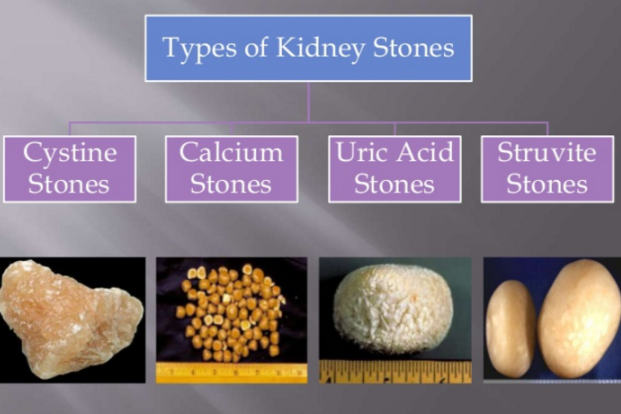A Comparative Study of the Risk Factors and Prevention Techniques for Kidney Stones and Urinary System Infections: Insights for Better Wellness
The enhancing prevalence of kidney stones and urinary tract infections (UTIs) demands a better assessment of their interrelated danger factors and avoidance techniques. By recognizing and dealing with these shared vulnerabilities, we can establish more reliable methods to minimize the risks linked with each. Kidney Stones vs UTI.
Overview of Kidney stones
Kidney stones are a common urological problem, affecting around 10% of people at some factor in their lives. These solid mineral and salt down payments form in the kidneys when urine comes to be concentrated, permitting minerals to crystallize and bind with each other. The make-up of kidney stones varies, with calcium oxalate stones being one of the most common, adhered to by uric acid, struvite, and cystine stones.
Danger variables for the development of kidney stones consist of dehydration, dietary habits, excessive weight, and specific clinical conditions such as hyperparathyroidism or metabolic conditions. Symptoms of kidney stones can range from light pain to severe discomfort, commonly offering as flank pain, hematuria, and urinary seriousness.

Comprehending Urinary System Infections
Urinary system tract infections (UTIs) represent a prevalent clinical problem, especially amongst females, with around 50-60% experiencing at least one UTI in their lifetime - Kidney Stones vs UTI. UTIs take place when microorganisms go into the urinary system, bring about inflammation and infection. This condition can impact any kind of part of the urinary system, consisting of the kidneys, ureters, bladder, and urethra, with the bladder being one of the most frequently influenced website
The medical presentation of UTIs typically includes signs and symptoms such as dysuria, enhanced urinary system frequency, seriousness, and suprapubic pain. In many cases, individuals might experience systemic signs and symptoms such as high temperature and chills, indicating a more severe infection, possibly entailing the kidneys. Medical diagnosis is primarily based upon the existence of signs and symptoms, corroborated by urinalysis and urine society to recognize the causative microorganisms.
Escherichia coli is the most usual pathogen connected with UTIs, accounting for roughly 80-90% of instances. Danger variables consist of anatomical proneness, sex, and certain medical problems, such as diabetes mellitus. Comprehending the pathophysiology, medical manifestations, and diagnostic standards of UTIs is vital for reliable management and prevention approaches in prone populaces.
Shared Danger Factors
Several shared threat elements add to the growth of both kidney stones and urinary system infections (UTIs), highlighting the interconnectedness of these two problems. Dehydration is a prominent danger element; insufficient liquid intake can lead to focused pee, promoting the development of kidney stones why not find out more and producing a positive atmosphere for bacterial development, which can precipitate UTIs.

Modifications in estrogen levels can impact urinary system tract health and wellness and stone formation. Furthermore, weight problems has actually been determined as a typical danger factor, where excess weight can lead to metabolic modifications that prefer both kidney stone growth and urinary system tract infections.
Prevention Techniques
Recognizing the common danger variables for kidney stones and urinary system infections underscores the significance of implementing effective avoidance strategies. Central useful site to these strategies is the promotion of appropriate hydration, as adequate fluid intake thins down urine, reducing the concentration of stone-forming compounds and lessening the threat of infection. Medical care experts typically recommend drinking at the very least 2 to 3 litres of water daily, tailored to individual demands.
In addition, nutritional alterations play an important role. A well balanced diet reduced in sodium, oxalates, and pet healthy proteins can alleviate the development of kidney stones, while enhancing the consumption of vegetables and fruits supports urinary system system health and wellness. Normal tracking of urinary system pH and make-up can likewise help in identifying tendencies to stone formation or infections.
Additionally, keeping proper health methods is essential, especially in ladies, to avoid urinary tract infections. This consists of wiping from front to back and urinating after intercourse. Lastly, for people with persistent concerns, prophylactic therapies or drugs might be necessary, directed by medical care experts, to attend to certain danger aspects effectively. In general, these prevention methods are important for decreasing the occurrence of both kidney stones and urinary system system infections.
Way Of Living Alterations for Wellness
Carrying out particular way of living changes can substantially decrease the danger of developing kidney stones and urinary system tract infections (UTIs) A balanced diet plan plays a critical role; raising liquid consumption, particularly water, can weaken urine and assistance protect against stone formation as well as flush out bacteria that might lead to UTIs.
Regular exercise is likewise crucial, discover here as it promotes total wellness and aids in preserving a healthy weight, more lowering the threat of metabolic problems connected with kidney stones. Furthermore, practicing good hygiene is necessary in protecting against UTIs, specifically in females, where cleaning techniques and post-coital peeing can play preventive functions.
Avoiding too much caffeine and alcohol, both of which can intensify dehydration, is suggested. Lastly, routine medical check-ups can aid check kidney feature and urinary system health and wellness, identifying any early indicators of concerns. By adopting these way of living adjustments, individuals can improve their overall health while successfully decreasing the risk of kidney stones and urinary system infections.
Final Thought
In final thought, the comparative evaluation of kidney stones and urinary system tract infections emphasizes the relevance of common danger factors such as dehydration, nutritional practices, and excessive weight. Carrying out effective avoidance strategies that concentrate on sufficient hydration, a well balanced diet plan, and normal exercise can minimize the incidence of both problems. By addressing these usual determinants via lifestyle adjustments and improved hygiene techniques, individuals can improve their total health and wellness and lower their vulnerability to these common wellness issues.
The boosting frequency of kidney stones and urinary system infections (UTIs) necessitates a better exam of their interrelated risk aspects and avoidance strategies - Kidney Stones vs UTI. The structure of kidney stones differs, with calcium oxalate stones being the most widespread, followed by uric acid, struvite, and cystine stones
Treatment alternatives differ based on the size and type of the stone, varying from traditional monitoring with increased fluid intake to clinical treatment like lithotripsy or medical elimination for larger stones. Additionally, weight problems has been determined as an usual threat factor, where excess weight can lead to metabolic changes that favor both kidney stone development and urinary tract infections.Comprehending the shared danger aspects for kidney stones and urinary system system infections highlights the value of applying reliable avoidance approaches.
Comments on “Browsing the Signs of Kidney Stones vs UTI: A Detailed Contrast”